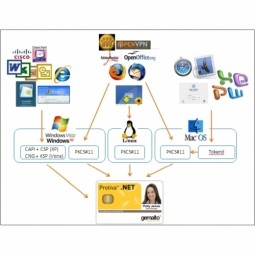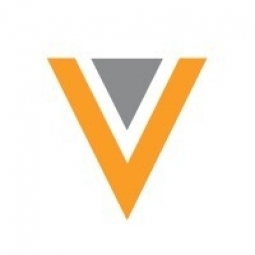Applicable Industries
- Apparel
- Life Sciences
Applicable Functions
- Sales & Marketing
About The Customer
Kyowa Kirin, Inc. U.S. is a large biopharma company headquartered in Tokyo, Japan. The company is part of the global Kyowa Kirin Group, a Japan-based global specialty pharmaceutical company. Kyowa Kirin U.S. is focused on creating new value through the pursuit of advances in life sciences and technologies. The company is committed to contributing to the health and well-being of people around the world by creating new value through the pursuit of advances in life sciences and technologies. The company's main focus is on delivering relevant and personalized content to healthcare professionals (HCPs) through digital channels.
The Challenge
Kyowa Kirin, a large biopharma company based in Tokyo, Japan, was faced with the challenge of adapting to the digital shift in the industry, particularly in the wake of the COVID-19 pandemic. The company needed to deliver relevant content to healthcare professionals (HCPs) through digital channels, which had become the new standard for interaction in the field. The shift to digital engagement models required the company to create more content faster, while maintaining compliance and cost-effectiveness. The company also needed to harness data-driven insights to inform the content creation process and deliver personalized content at each stage of the customer journey.
The Solution
Kyowa Kirin addressed these challenges by leveraging agile operating models and modular content solutions. These tools allowed the company to adapt content on the fly, maintain compliance, and stay cost-prohibitive. The company also focused on building flexibility into their digital asset management systems and content creation workflows to stay relevant across the digital ecosystem. To drive more personalized content, the company harnessed data-driven insights to understand HCPs’ different personalities, preferences, and needs. The company also leveraged modular content to streamline the reuse of their key messages across new and existing channels, which enabled them to quickly adapt content to HCPs’ evolving needs while spending less time in medical, legal, and regulatory (MLR) review cycles.
Operational Impact

Case Study missing?
Start adding your own!
Register with your work email and create a new case study profile for your business.
Related Case Studies.

Case Study
Fire Alarm System and Remote Monitoring Sytem
Fire alarm systems are essential in providing an early warning in the event of fire. They help to save lives and protect property whilst also fulfilling the needs of insurance companies and government departments.Fire alarm systems typically consist of several inter-linked components, such as smoke detectors, heat detector, carbon monoxide, manual call points, sounders, alarm and buzzer. The fire alarm system should give immediate information in order to prevent the fire spread and protect live and property.To get maximum protection a shoe manufacturer in Indonesia opted for a new fire alarm system to monitor 13 production sites spread over 160 hectars. Although the company had an existing fire alarm system, it could not be monitored remotely.It was essential that the new system would be able to be monitored from a central control room. It needed to be able to connect to the existing smoke detector and manual call point. Information should be easily collected and passed on to the Supervisory Control and Data Acquisition (SCADA) system. Furthermore, the system should have several features such as alarm management, auto reporting, being connected to many client computers without additional cost, and run 24/7 without fails. The company also needed a system which could be implemented without changing the architecture of the existing fire alarm system.

Case Study
IoT Applications and Upgrades in Textile Plant
At any given time, the textile company’s manufacturing facility has up to 2,000 textile carts in use. These carts are pushed from room to room, carrying materials or semi-finished products. Previously, a paper with a hand-written description was attached to each cart. This traditional method of processing made product tracking extremely difficult. Additionally, making sure that every cart of materials or semi-finished products went to its correct processing work station was also a problem. Therefore, the company desired an intelligent solution for tracking assets at their factories. They also wanted a solution that would help them collect process data so they could improve their manufacturing efficiency.

Case Study
Retailer Uses RFID Scanner to Improve Efficiency
Patrizia Pepe wished to improve the logistics of their warehouse: accepting incoming goods from their production sites, movement of items throughout
the warehouse, and packaging of goods for distribution to the retail locations. They initially tried to use barcodes for this function. Because barcodes must be individually scanned within a line-of-sight, the acceptance of goods coming into the warehouse was too time consuming. Working with the University of Florence, Patrizia Pepe instituted a five-month pilot project beginning in August of 2009 to test the validity of an RFID solution. The pilot involved tagging of about 60,000 items for the second seasonal collection, and convinced the company to move forward with tagging all items.

Case Study
Monitoring and Controlling Automatic Mixing and Dispensing Machines
As technology advances, textile manufacturing has been transformed from a labor-intensive to a partially or fully automated industry. Automation is significant in all segments of textile production - from spinning to printing, and textile machinery manufacturers are constantly searching for new technologies and automation processes will increase the productivity of their machines. The color paste mixing and dispensing machine is an essential part of the printing and dyeing process. With the advantage of automatically computerized controls and database management, the system can significantly improve its dispensing precision, working efficiency and production quality as well as reducing material consumption.

Case Study
Corporate Identity Solution Adds Convenience to Beckman Coulter
Beckman Coulter wanted to implement a single factor solution for physical and remote logical access to corporate network. Bechman Coulter's users were carrying smart card badges for doors, but also needed a one-time password token to access to our corporate network when they were not in the office. They wanted to simplify the process.







